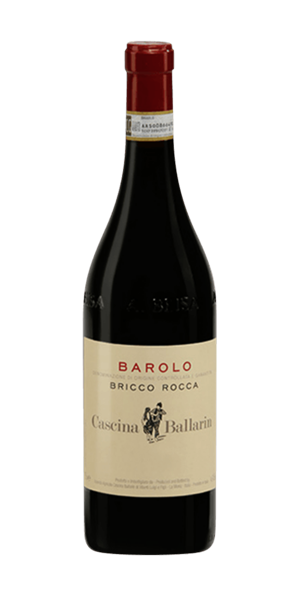Alberto Ballarin
BAROLO BRICCO ROCCA 2017
ELEGANT FULL-BODIED RED
Barolo is produced in eleven ‘communes’ or village territories in the Langhe sub-region. Similar to the Grand Crus classification in Burgundy, Barolo producers have separated their holdings into individual vineyard lots and label the wines with specific geographic designations or menzioni. Unlike in Burgundy, Barolos crus are best thought of as districts, since the majority are too large to be viewed as just one vineyard or a cru site of limited size.
MeGa-Barolo.pdf (langhevini.it)
Very broadly speaking, Nebbiolo vineyards on the eastern side of the Langhe sub-region are planted on soils formed during the Serravallian stage (Serravallian soils). These soils are sandstone-based, whitish-chalky beige in colour, characterised by sandy layers alternating with calcareous marl and limestone and rich in iron and phosphorous. The Barolos made on this side can show an austere character, intense body, power and structured tannins but they are the most ageworthy and are best approached ten years from the vintage. The western side, on the contrary, is home to soils partly formed during the Tortonian stage. Such soils have a bluish-gray colour and are made of calcareous marl mixed with sand. They are more fertile than Serravallian soils and are rich in magnesium and manganese. Readier to drink (as early as six years after the harvest), more approachable Barolos are made there.
Bricco Rocca is a small sub-denominations of the Barolo area in the town of La Morra. Cascina Ballarin vineyards cover about 3.5 hectares and are planted at slighter lower altitude than the other Barolo sub-denominations but they benefit of a great exposure. The word “Bricco” means the highest part of a hill. “Rocca”, after which the hill was named, is the name of the neighbourhood located at the foot of the hill.
Bricco Rocca - Winery Alberto Ballarin
Bricco Rocca is located in the Tortonian area, rich in light blue, less compact marls. The Barolo Bricco Rocca is less structured than the Bussia but offers a beautiful and elegant nose. It is softer as the sandy soils minimize the tannins.
Altitude: 280 meters a.s.l.
Exposure: south
Training system: guyot
Age of vines: 35-55 years
Yield per hectare: 55 quintals of grapes per hectare
Soil: calcareous – marly
Following on from an almost perfect 2016 growing season in Piedmont, 2017 was certainly not as straightforward. 2017 was the driest vintage on record and the earliest picking dates of the last five years however, despite the heat, the wines are surprisingly vivid, fresh with a lovely rich fruit.
Alcohol levels remained normal – particularly for the Nebbiolo, probably because the vines shut down during the hottest period and stopped producing sugar. More surprising it was that acidity remained high due to the low levels of malic acid in the grapes. It is indeed the tartaric acid in grapes that provides freshness, while malic acidity lessens the sense of freshness. Furthermore, the nights were cooler than other hot vintages – so the temperature swing between the day and the night was potentially another factor that helped preserve the acidity and freshness in the wines. A fresh September also set the stage for Nebbiolo’s tannins to fully ripen. While Nebbiolo production was down by around 15 to 25% for some producers (due to the spring frosts and drought), the grapes that survived were beautifully ripe.
The Barolo are fresh and fruity with a mid-palate richness and smooth tannins. The wines are not flabby and more ready to drink now compared to 2016 vintage. They may not age as well the 2016 but they will drink beautifully over the next 10 to 15 years and they have a better ageing potential in comparison to other similarly warm vintages.
Vinification: fermentation in thermo-regulated stainless steel tanks
Aging: 26 months in Slavonian oak barrels
Enticing aromas of dark-skinned berry, blood orange, rose and violet. The savory, balanced palate offers fruitcake, vanilla, raspberry compote and licorice alongside fine-grained, almost velvety tannins.
Barolo is made to be drunk with food and will often taste too acidic or tannic on its own. It goes particularly well with full-flavoured meat dishes like steak or with beef casseroles and game dishes such as venison and pheasant as the tannins will cut through the meat proteins.
Vintage: 2017
Grape: 100% Nebbiolo
Region: Piemonte
Alcohol (ABV): 14%
